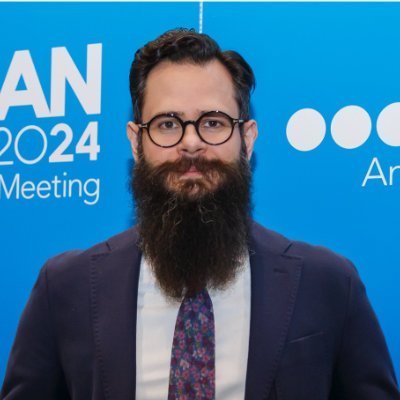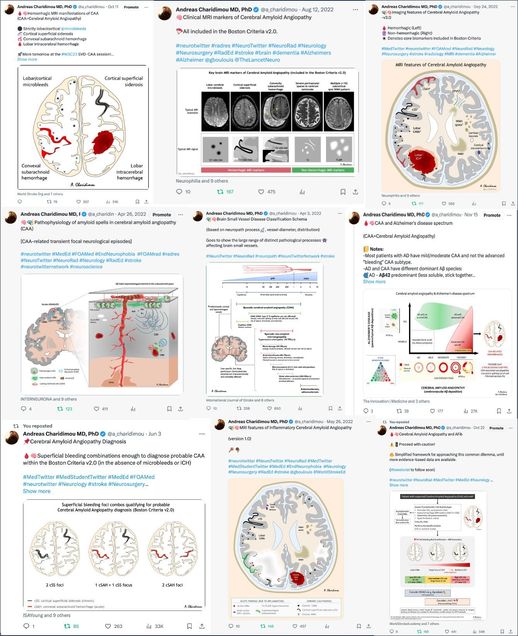Faculty Feature: Andreas Charidimou

Dr. Charidimou is an Assistant Professor of Neurology at Boston University Chobanian & Avedisian School of Medicine, and a Core Faculty member for the Center for Brain Recovery. He also holds roles as an Attending Physician, Director, Disease Modifying Therapy in Alzheimer’s Disease (DMTAD) Program Director, Cerebral Amyloid Angiopathy/Small Vessel Disease Clinic, VA Boston Healthcare System, Neurology Service.
Q&A with Andreas Charidimou
What is your current research focus, and how does it align with the Center for Brain Recovery’s mission?

My research focuses on how damage to the brain’s small blood vessels contributes to neurological conditions like stroke and dementia. I’m especially interested in cerebral small vessel disease and a related condition called cerebral amyloid angiopathy (CAA), where abnormal protein builds up in these vessels, increasing the risk of brain bleeds and cognitive decline.
This work directly aligns with the Center for Brain Recovery’s mission to bring together experts across disciplines to tackle complex brain disorders and brain health. My research bridges clinical care and imaging-based science to improve how we diagnose and treat these diseases. Importantly, it also supports CBR’s broader goals around brain health by exploring how small vessel disease affects both overall cognition and specific outcomes in conditions like aphasia. Through this work, we aim to better understand who is at risk, how to intervene earlier, and how to support recovery more effectively.
How did you initially become involved and/or interested in your field?
My interest began during my PhD at the UCL Institute of Neurology in Queen Square, where I encountered just how common—and understudied—small vessel diseases of the brain are. In the clinic, I saw firsthand how these conditions affected patients, yet we lacked clear answers about how they develop, how to diagnose them accurately, or how best to treat them. That disconnect between what we see at the bedside and what we understand scientifically became the driving force behind my research. I’ve been drawn ever since to research that brings patient care and brain imaging together to answer those important, real-world questions.
What brought you to Boston University?
I first came to Boston University for my neurology residency at BU and Boston Medical Center, where I found an incredibly supportive environment that values both patient care and scientific discovery. I’m now an Assistant Professor of Neurology at BU and an attending neurologist at the Boston VA Healthcare System. What drew me to stay—and build my career here—is the strong culture of collaboration across institutions.
In addition to working closely with teams at Boston Medical Center, the Framingham Heart Study, and the BU Alzheimer’s Disease Research Center, I’m actively involved with the Center for Brain Recovery. The CBR has been a driving force for innovation, offering a truly interdisciplinary space where clinicians, neuroscientists, and engineers come together to tackle complex brain disorders. It’s an ideal environment to pursue my goal of advancing research at the intersection of vascular and neurodegenerative disease.
What research are you most proud of?
One of the research efforts I’m most proud of is leading a large international project to improve how we diagnose cerebral amyloid angiopathy (CAA), a condition in which abnormal protein builds up in the brain’s blood vessels and can lead to bleeding and cognitive decline. Working with collaborators around the world, I helped assemble the largest-ever collection of brain scans and tissue samples from patients with CAA. This effort led to the development and validation of the updated Boston Criteria v2.0—now widely used by clinicians and researchers to more accurately identify the disease.
We are now continuing and expanding this line of research with even larger and more diverse patient populations, including new studies supported by the Center for Brain Recovery’s collaborative infrastructure. These efforts reflect our long-term goal: to build a stronger foundation for early diagnosis, better risk prediction, and ultimately more targeted therapies for people affected by small vessel disease.
Is there any additional information you would like to share with the CBR community?
I began developing this portfolio of medical illustrations on cerebral amyloid angiopathy (CAA) and small vessel disease (SVD) as a way to clarify complex mechanisms for myself while studying the disease and teaching about it. Over time, I realized from their broad uptake and circulation that others also found them valuable for understanding these difficult concepts. I see them as “living illustrations,” which I revisit and update as our scientific understanding evolves. I am grateful to Dr. Maria Varkanitsa, who is often the first to provide thoughtful feedback that sharpens and refines these visuals.
Learn More about Andreas Charidimou
